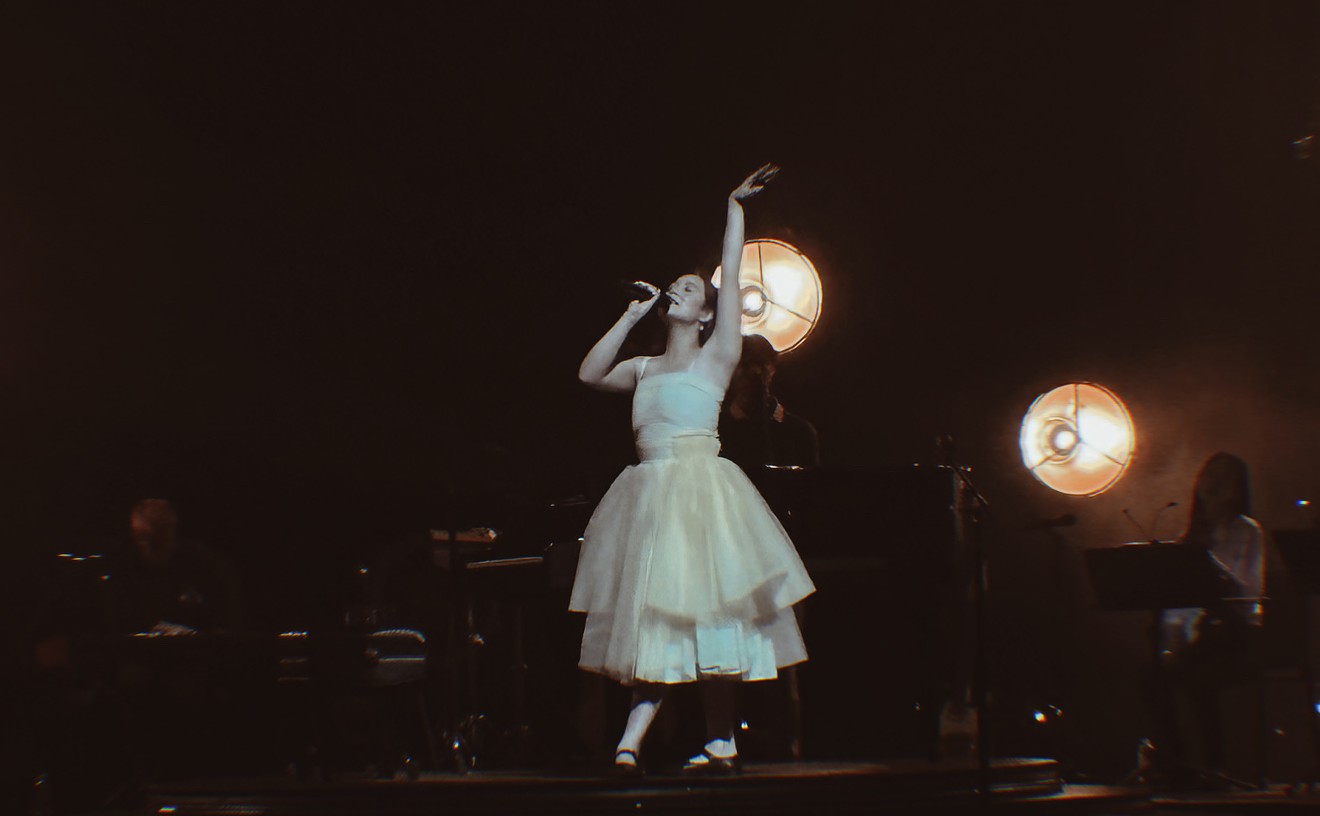Matrix Reloaded starts some undefined time after the end of the first movie. The last transmission from a ship called the Osiris warns Morpheus (Laurence Fishburne) and the other "real world" captains that the machines are digging through the earth's crust straight down toward Zion, the last remaining human city. This bit of info refers back to the animated short "The Final Flight of the Osiris," which accompanied Dreamcatcher in theaters and will appear with eight other shorts on the upcoming Animatrix DVD. The Matrix Reloaded has a few other references to these films, but nothing that makes them prerequisite to understanding the story.
Morpheus' Nebuchadnezzar and the other ships are ordered home to Zion to defend the city, setting off a series of internal political battles of strategy that constitute the slowest part of the film. The problem is that there can be no direct connection to the Matrix from within Zion, and, as in the first film, almost all the interesting stuff happens in the Matrix. Luckily the Wachowskis have contrived a reason for Morpheus and the gang to leave town, so the fun can begin again.
Once jacked in, Neo (Keanu Reeves) and crew receive instructions from the Oracle (the late Gloria Foster, who provides a likable human relief from the crew's often machine-like humans) that resemble a virtual-reality computer-hackers' treasure hunt: Find this character/software module, so you can get instructions to the next character/software module, who will have information that will help you find this other crucial character or locale, which will tell you how to protect Zion. Or something. It's all very Bring-me-the-broom-of-the-Wicked-Witch-of-the-West, with the fate of the world at stake.
Some of these developments increase our knowledge of what the Matrix is and how it works and what the hell is really going on, but others feel like gratuitous plot embellishments, without the sense of necessity and inevitability that marked everything in the original. There was almost nothing in the first film that could be removed without damaging our eventual understanding; in Reloaded, there's lots of stuff that provides excitement or is simply, in and of itself, really cool, but could be written out. The ephemeral, dreadlocked albino twins, for instance: Yeah, spiffy...but so what?
With the November release of part three, The Matrix Revolutions, however, these cavils may turn out to be incorrect. Maybe there is a more crucial metaphysical payoff to the twins and other new characters, like the Merovingean (Lambert Wilson), a snotty French avatar, and his frustrated wife (an ill- and under-used Monica Bellucci). But, so far, some of this stuff is reminiscent of Back to the Future 3, a perfectly OK film that nonetheless felt like an unnecessary tag-on. Might that series have been better with only 1 and 2?
Fight director Yuen Wo Ping provides his usual dazzling choreography, but that, too, feels both a bit compromised and a bit "been there, done that." If Neo fighting one Mr. Smith is great, that doesn't mean that Neo fighting a hundred Mr. Smiths is a hundred times as great--particularly when so much is accomplished through CGI and camera tricks. Many of the fights here are so fast and furious and protracted that they become meaningless.
It's a great thing that CGI frees stunt men from doing some really dangerous stuff now. But, injudiciously applied, it can rob an action sequence of all power. The best action scenes, even in sci-fi and horror flicks, are somehow rooted in reality.
Many Hong Kong movie fans disdained the use of wires and harnesses as unauthentic or even cheating. But even those tricks are not as far from reality as supernaturally sped-up CGI simulations. The further we get from reality, the less thrilling the effect is. There simply is very little genuine suspense in these scenes; the excitement is more the result of a physiological reaction to fast cutting, camera movement and sound effects than it is of empathetic investment in the characters. Would we be that much less excited during the big freeway chase if it were Mr. Smith (or whomever) teetering over the edge instead of Morpheus?
Aggravating this is the more general "rule" problem: Who has the power to do what? And why? Why does Neo fight and fight the Smith army and almost lose several times when we know that, from the first punch, he could have simply done his Superman act and flown away? Why can he beat them? "Because he's the One and can do anything" isn't a good enough answer. If his powers are unbounded, then there's no suspense and no point to the entire thing. If they are bounded, we need to know how. The film's best action moments involve a motorcycle dodging in between speeding cars, because these at least look real. The worst action moments involve Neo swooping down from the sky to pull someone out of harm's way. That Neo could be considered a deus ex machina may be a conscious joke on the Wachowskis' part, but it grows old.
The answers to some of these questions may be implicit in the computer mechanics that the Matrix represents: A fight could be two cyber-entities--a software module and the neural impulses of a jacked-in human--"punching" to infect each other's code and "parrying" by mutating into immunity from that punch. The end of the first film suggested that Neo's power stems from his newfound ability to see the code, i.e., bits and bytes, behind the Matrix's "reality" and to therefore respond to what's really there rather than to the image.
But can anybody keep all this stuff in his or her head in a useful way while watching the film?
The last few scenes include a baffling event that points toward a possible upcoming explanation in part three. We won't spoil it, but, if it's where we're heading--and it could be a total red herring--things could turn out to be either very satisfying or very irritating. Be forewarned that Matrix Reloaded really is only half of a two-part story. Unlike The Matrix, it ends with a cliffhanger and represents less of an independent whole. (If you sit through the nine or so minutes of closing credits, you'll see a preview of The Matrix Revolutions.)
In the meanwhile, for all these problems big and little, the Wachowskis still hold the current franchise on intellectually engaging action films. It's not like I won't be heading back for a second (or even third) look.










